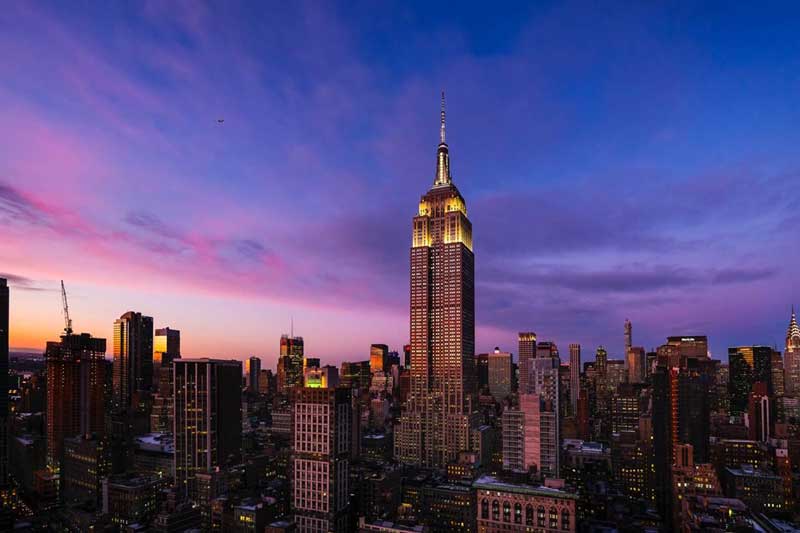Overview
In the previous articles we have introduced both the invention history of stainless steel and its early applications in architecture, represented by the Chrysler Building in New York, USA in 1930. The application is quite early, but it is not the first time when stainless steel is applied in architecture.
A year earlier in 1929, stainless steel had already been applied in a building in UK. It is Savoy Hotel in London who pioneered the use of stainless steel in construction industry, represented by its iconic stainless steel “Savoy” sign. This 5-star hotel still stands gloriously today. Let’s explore together.

The Savoy Hotel in London
The Superlative Location
The Savoy Hotel sits on the Northbank of the River Thames, London, UK. It is also the only five star hotel which claims the spectacular views of the river.
At Savoy, guests can get convenient access to surrounding famous sites, such as the Strand, London’s West End, Covent Garden, the Royal Opera House, Somerset House, Royal National Theatre, National Film Theatre, Tate Modern, Shakespeare’s Globe and the popular London Eye.


The Guests
Apart from its superlative location, the hotel was charmed by numerous celebrities, including but not limited to the famous Hollywood star Marilyn Monroe, the renowned comedian and director, Charlie Chaplin.


The Innovation
What really sets Savoy apart and keeps it always the top choice over the long history is its innovative entrepreneurship. Just as one of the company directors pointed out in the 1930s, “The Savoy is always up-to-date, and if possible, just a little ahead.” (SAVOY, 2024).
Back to its opening, the Savoy has kept pace with the world leading new technologies, such as the adoption of electricity-powered lights and hot water at the time when the commercial light bulb had just been patented in the US in 1879, the assembling of US imported lifts when there were no British lift supplier, the modernized kitchens and the famous chef Auguste Escoffier who led the innovation on kitchen organizations into stages (stations) that are still applied to date by most large restaurant kitchens, advertising shipboard “Marconigrams” from 1905 for travelers to reserve a room at The Savoy before landing in England, installing air-conditioning since the late 1920s to the mid 1930s, computerizing its guest records in 1984. All this was done ahead of its time.



The Decoration History
Built by Richard D’Oyly Carte, the Savoy Hotel was opened in 1889. It was initially designed to look like a fashionable waterside Continental hotel from exterior, with long rows of balconies where guests can enjoy alfresco dining with views of the River Thames, and classically Victorian style wallpapers in the guest rooms.
With Richard D’Oyly Carte’s death in 1901, his son Rupert took the Board as the new chairman. After acquiring a block of land next to the Savoy Theatre, and north of the original hotel, the whole site was levelled in 1903. The original Victorian design was replaced with bright Edwardian design.
In 1920s after the Great War, the Savoy directors went to Paris for the International Exhibition of Modern Decorative and Industrial Arts in 1925 and returned with aspiration to “arte moderne”, now known as Art Deco. Redecoration of the private dining room “Pinafore” ensued in 1926. It was designed by British designer Basil Ionides and retained until today.
Then came 1927 when a young architect, Howard Robertson, started working for Savoy to remodel the gentlemen’s toilets. In 1929, Robertson came up with his most famous and prominent design, the Savoy’s iconic stainless steel “Savoy” sign which runs the width of Savoy Court.

The Iconic Stainless Steel “Savoy” Sign
Stainless steel was invented as early as in 1912, but metal structure was novel and fresh then. It wasn’t until 17 years later that it was firstly applied in architecture.
In 1929 the Savoy Hotel used a small amount of the metal to enhance its entrance aesthetic appeal. The canopy above the entrance is covered with a large stainless steel sheet constituted by small ones, hung with the large neon sign "Savoy." Stainless steel sheets are also used on the façade around the entrance, adding a grand and magnificent impression to the hotel. The use of stainless steel makes the Savoy Hotel the first of its kind in architecture history.
Stainless Steel at CIVMATS
If you are looking for a reliable stainless steel supplier in China, come to CIVMATS for free consultation. We have exported stainless steel materials from China to overseas countries since 2016. Compare our offer and make the right choice. We are waiting for you!

